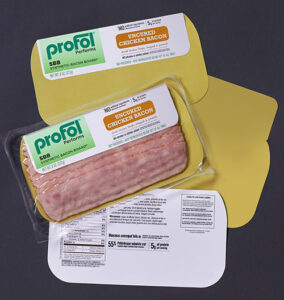Are There Any Limitations for High-Pressure Processing?
While HPP can be used to preserve a wide range of solid and liquid foods, it is not suitable for all food products. Two of the key considerations to keep in mind when evaluating whether HPP is right for your food processing needs are:
- The food must contain water. HPP is suitable for processing a variety of products with high moisture contents, such as juices, salads, salsas, and sauces. It is not suitable for low-moisture solid or powder foods since it may cause them to cake and may not effectively destroy the microbes that are present.
- The food must not have internal air pockets. HPP is not suitable for food with entrapped air, such as marshmallows, strawberries, or leafy vegetables. These products would be crushed under the high pressures.
Why Partner With Profol for Your High-Pressure Processing Material Needs?
Looking for materials that can stand up to your high-pressure food processing operations? Profol has got you covered! Our SBB Synthetic Bacon Board® is ideal for the high-pressure processing of packaged non-pork bacon products. Whereas traditional pulp-based bacon boards absorb moisture, which causes them to lose stiffness and graphics quality, our material does not. As a result, it can withstand the conditions experienced during the HPP operations needed to neutralize pathogens in non-pork bacon products, so you can extend your product’s shelf life without affecting its quality.
To learn more about our material and how it can benefit your high-pressure processing needs, contact Mark VanSumeren at sales@profol.com.
 High-pressure processing (HPP) is a food preservation technique that utilizes high pressure to keep products fresh and safe for longer. The process can be performed at ambient or refrigerated temperatures, which reduces the risk of the processed products experiencing thermal degradation or damage (e.g., cooked-off flavors). As a result, it is ideal for preserving food that is sensitive to heat.
High-pressure processing (HPP) is a food preservation technique that utilizes high pressure to keep products fresh and safe for longer. The process can be performed at ambient or refrigerated temperatures, which reduces the risk of the processed products experiencing thermal degradation or damage (e.g., cooked-off flavors). As a result, it is ideal for preserving food that is sensitive to heat.

